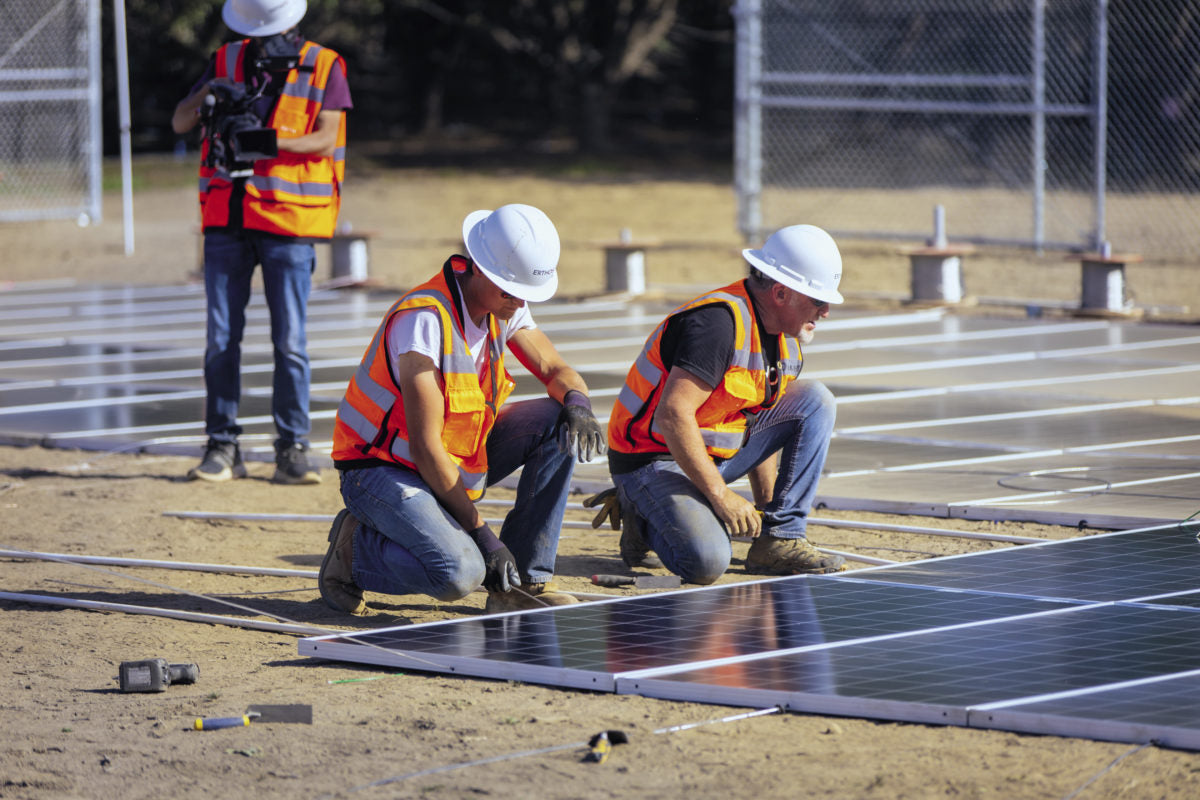https://www.pv-magazine.com/2023/01/03/pv-could-turn-europe-into-solar-to-x-economy/
PV could turn Europe into ‘solar-to-X economy’

Installed electricity capacity (left) and electricity generation (right) from various sources across the three 2020-50 scenarios
Image: LUT University, Progess in Photovoltaics, Creative Commons License CC BY 4.0
Researchers from the Lappeenranta University of Technology (LUT) have investigated two different scenarios for how Europe could achieve its zero-carbon-emissions target by either 2050 or 2040. They found that PV technology could turn the continent's entire energy system into a “solar-to-X economy.”
“Energetic sovereignty is possible for Europe and finally a societal choice,” Christian Breyer, professor of solar economy at LUT, told pv magazine. “100% renewable energy supply for Europe around 2040 is possible.”
Breyer emphasized the importance of PV as the main pillar of an energy system in which electricity is used on a large scale by the heat and mobility sectors.
“The characteristic term for the arising energy system is ‘power-to-X economy’ as direct and indirect electrification is the key element of a sustainable and affordable energy system,” he explained. ‘Hydrogen Economy’ is a misleading view, as hydrogen is not the characteristic element of the arising energy system, but an important intermediate energy carrier in power-to-hydrogen-to-X applications.”
The research group presented the two scenarios in “Reflecting the energy transition from a European perspective and in the global context—Relevance of solar photovoltaics benchmarking two ambitious scenarios,” which was recently published in Progress in Photovoltaics.
The researchers aimed to describe the role of solar for the European energy transition within a global context. They used the LUT Energy System Transition Model, which considers heat and electricity demand for the residential, commercial and industrial sectors, as well as transport sector energy demand. In addition, they looked at energy-related CO2 emissions.
“The cost-optimized modeling was conducted in five-year steps, with each modeled year in hourly resolution to ensure the supply–demand balance at each hour,” said the group.
Popular content
They showed that pre-pandemic-level energy system costs could be reached under both scenarios, with the 2050 scenario presenting an 8.5% lower pathway costs in reaching zero CO2 emissions.
“The largest source of energy is solar PV with 54% to 56% of total primary energy demand and 61% to 63% of total electricity generation in 2050,” they said.
Breyer said that past research had pointed to a share of between 50% and 60% for solar in the overall energy mix by 2050.
“We find slightly more than 60% and this slightly higher PV share is also a consequence of more detailed PV modelling, such as single-axis tracking and diversified PV prosumers, but also a high degree of sector coupling with low-cost batteries and low-cost electrolyzers that support a higher PV share,” he explained.
They concluded that the success of the proposed scenarios will likely depend on the strong interplay between solar, wind, battery storage, electrolyzers, and heat pumps.
“The nature of the arising future energy system can be best termed as a power-to-X economy, as the dominating majority of primary energy is electricity that is used across the energy system in direct applications, such as power-to-heat, power-to-mobility or power-to-water in dry regions, whereas indirect electricity use mainly follows the route of power-to-hydrogen-to-X, with final energy carriers in the form of liquids, methane, ammonia and methanol,” the scientists concluded.
This content is protected by copyright and may not be reused. If you want to cooperate with us and would like to reuse some of our content, please contact: editors@pv-magazine.com.




